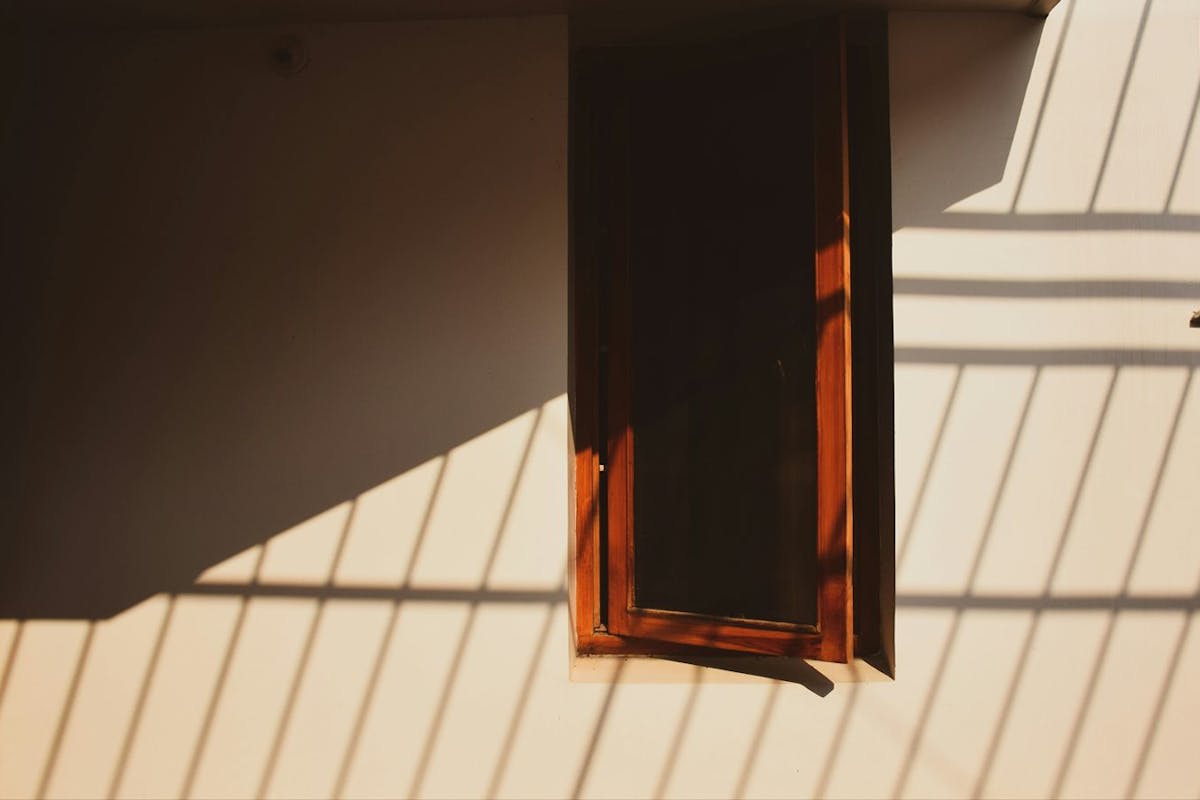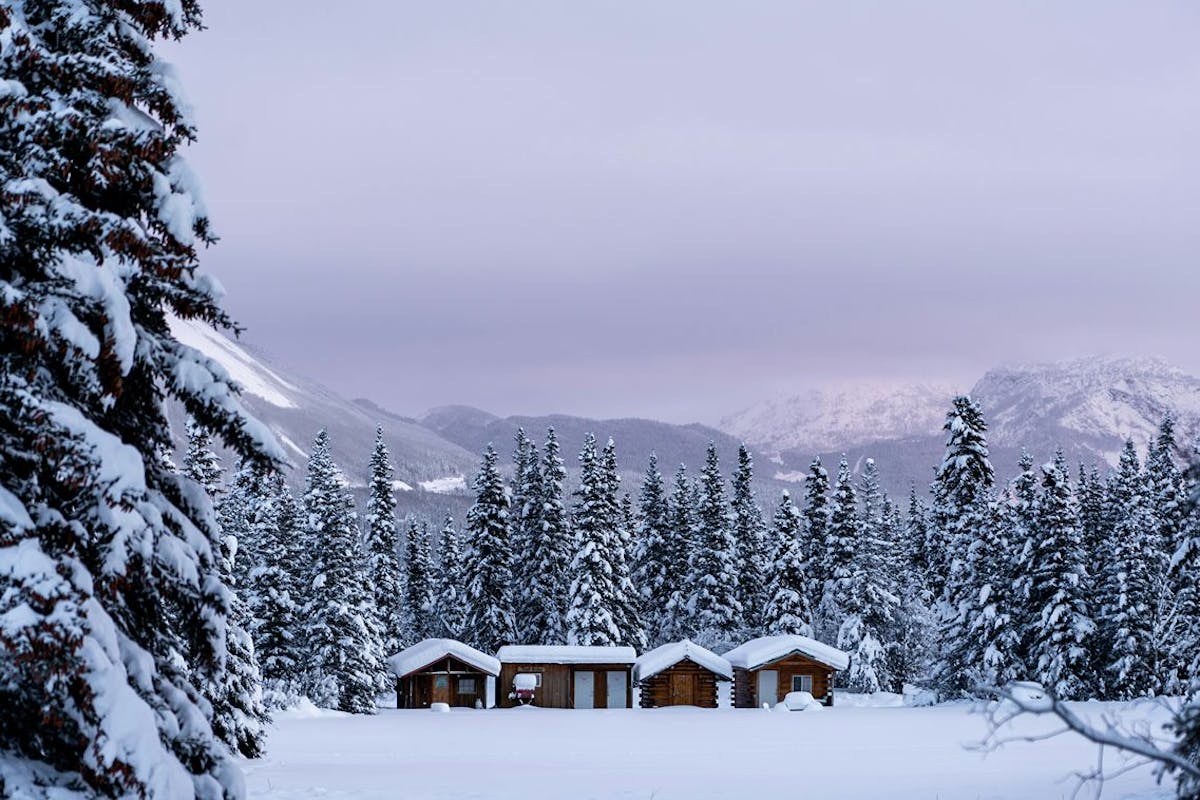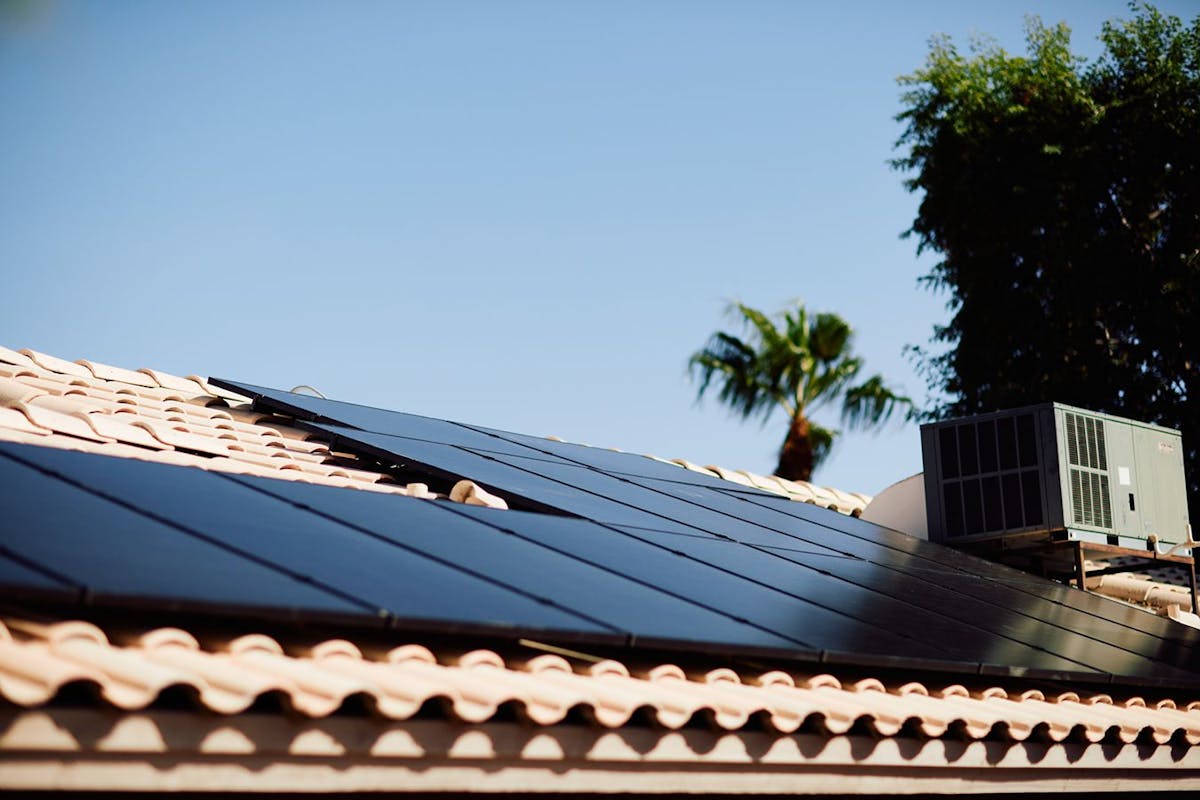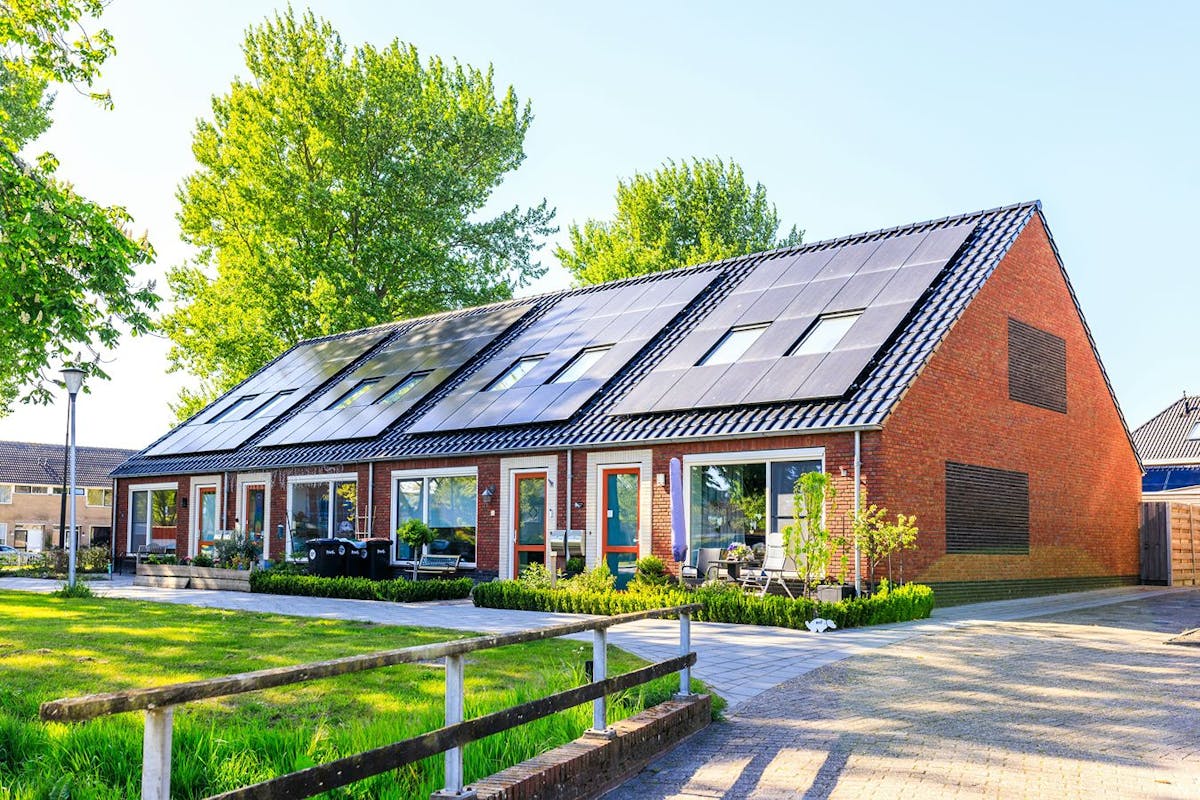Passive Solar Design: How It Works, Pros, and Cons
Last edited

Author
Andrew Giermak
Solar and Electrification Writer and Editor

Editor
Andrew Blok
Electrification and Solar Writer and Editor

Passive solar design uses the natural, free, 100% clean energy of the sun to heat and cool your home. Done well, it can replace most or all of your heating and cooling energy use. A passive solar home can be a fully custom-built home or a major renovation project. If a new property or total rebuild isn’t realistic for you, you can use your windows, ceiling fans, ventilation, and natural light to put passive solar energy to money- and energy-saving use.
If you’re looking for ways to save money and live cleaner everyday, using solar energy passively, or actively, may be a bright idea.
See how much you can save by going solar with Palmetto
What is passive solar design?
The Williams College Zilkha Center for Environmental Initiatives gives a passive solar definition. It’s “the use of the sun’s energy for the heating and cooling of living spaces by exposure to the sun.”
In other words, if you have ever opened up the blinds to let more of the sun’s heat inside, you already understand the basic concept of passive solar design.
Active vs. passive solar systems
Passive solar design and passive solar systems are separate from active solar energy systems, such as the solar panels for your home that produce electricity.
Passive solar systems are, according to the Environmental and Energy Study Institute (EESI), “structures whose design, placement, or materials optimize the use of heat or light directly from the sun,” while active solar systems convert the sun's energy into “a new form, such as hot water or electricity.”
Passive solar homes elements
People have been using passive solar techniques for millennia, which means we have it down to a science. Passive solar homes are often intentionally built and incorporate most or all of the specific elements outlined in the table below.
| Element | Description |
|---|---|
| The Aperture | An aperture, meaning a hole or gap, is a large glass area on a solar home that faces south (in the US) to let sunlight seep in most of the day. Passive solar homes may have one large window wall or several intentionally positioned apertures. |
| Solar Control / Overhang | A solar control or solar shade is a small piece of overhanging roof above an aperture. This overhang is specifically designed to help maintain comfortable interior temperatures year-round by allowing sunlight in during the winter and blocking out high summer sun exposure. |
| Thermal Mass | A thermal mass is a collection of building materials that can be used to capture, store, and distribute heat from direct sunlight. Typical thermal masses include walls, floors, and other building features made of concrete, brick, stone, or tile. |
| Smart Building Design | Passive solar homes include several smart building design features to manage solar intake and maintain comfortable living conditions such as shutters, ventilation, and ceiling fans. |
| Energy Efficiency Elements | To reduce heat loss and additional energy consumption, passive solar homes are typically well-insulated. This includes a tight building envelope maintained with sufficient air sealing along windows, doors, and throughout the home. |
Solar panels and passive solar design
It’s easy to incorporate electricity-generating solar panels into a home designed for passive solar heating and cooling.
In many instances, an overhang or solar control can be situated at the best angle and orientation for solar energy generation, allowing passive solar homeowners to install panels, have their cake, and eat it, too!
In the event you don’t have enough south-facing roof space to host solar panels, creative passive solar home designers may also be able to raise ground-mounted solar panels as a carport or an additional shaded outdoor area.
Auxiliary heating and cooling systems in passive homes
Passive solar design is a great way to reduce energy consumption at home. With that said, the majority of passive solar heating and cooling systems will occasionally need the help of additional energy-consuming devices.
To kick in some extra heat in the winter, passive solar homes often get assistance from woodstoves, heat pumps, space heaters, or other appliances. Passive solar homeowners living in warmer climates may want to consider heat pumps and fans to keep things cool indoors all summer long.
See how much you can save by going solar with Palmetto
Benefits of passive solar design
No matter how far you go into passive solar design with your home, there are multiple benefits. Here are some reasons to use free passive solar power.
- Savings: Creative ways to use solar energy can be free or very inexpensive, and reduce the cost of running your heating or cooling. More creative ways to save and track your home’s energy usage are on the new Palmetto app. The app lets you see your specific data and results when you make changes, big or small.
- Comfort: Passive solar designed homes are built to be comfortable in all seasons and have improved ventilation for good, consistent air quality.
- Energy independence: By using more of the sun’s energy, you’re less reliant on your utility, especially when you pair passive solar design with solar panels or a backup battery
- Sustainability: Using less fossil fuel lowers a home’s carbon footprint and means living a cleaner, more sustainable lifestyle.
Retrofitting passive solar home techniques
If you are not building a brand-new passive solar home, there are still many ways to incorporate passive solar design or capabilities into your home. For instance, if an energy audit shows you are losing heat through your roof, adding insulation to your attic can help keep any daily solar warmth inside your home.
Alternatively, if you have room on your property (and in your budget) for an additional living area, you can add a “sunspace” to reap the benefits of passive solar design. Also known as a sunroom, solar room, or solarium (but not to be confused with a greenhouse), a sunspace is an opportunity to build a one-room passive solar home that can also be used to help heat adjacent living spaces.
Review and additional resources
In summary, passive solar design enables you to use the sun’s power for your home’s heating and cooling with minimal additional energy consumption required. If you are building a new passive solar home or simply want to learn more, we recommend reading all of the Passive Solar Technology Basics from the National Renewable Energy Laboratory (NREL).
To learn more about how energy improvements could save you money, explore Palmetto’s Savings Maximizer or get a free savings estimate with Palmetto’s solar savings tool.
See what solar can do for you:
Frequently asked questions
What is passive solar design?
Passive solar design is the use of structure, materials, or systems to utilize the sun’s energy for heating, cooling, and light in an interior space.
Won’t passive solar design make my house too hot?
It is possible for a home with passive solar design to become too hot. Shading, window placement, window glazing, using fans, improvements to insulation, sealing, ventilation, or changes to building material, can be answers to cooling or warming a space.
Are there disadvantages to passive solar?
Disadvantages with passive solar design for homes include being dependent to a degree on your home’s climate, overall, and weather, on a day-to-day basis. You also need to account for the potential expense of construction or renovation to get an optimal design, and you may still need an HVAC system for some periods of heating and cooling.


